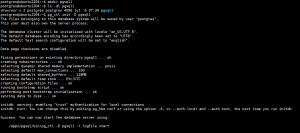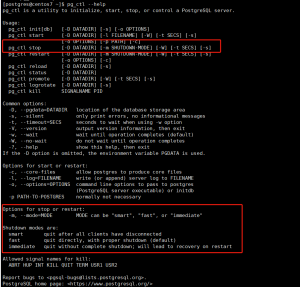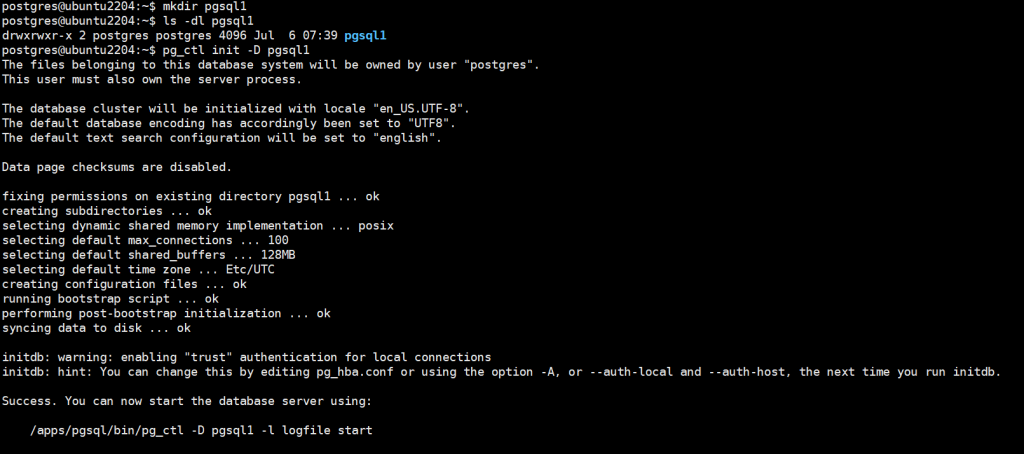利用 Redis 缓存日志数据,主要解决应用解耦,异步消息,流量削锋等问题。
![图片[1]-Filebeat 收集Nginx日志利用 Redis 缓存发送至Elasticsearch-李佳程的个人主页](http://www.lijiach.com/wp-content/uploads/2023/01/image-119.png)
将nginx 服务器的logstash收集之后的访问日志写入到redis服务器,然后通过另外的logstash将redis服务器的数据取出在写入到elasticsearch服务器。
局限性
- 不支持Redis 集群,存在单点问题,但是可以多节点负载均衡
- Redis 基于内存,因此存放数据量有限
1、部署 Nginx 服务配置 Json 格式的访问日志
root@web01:~# vim /etc/nginx/nginx.conf
http {
log_format access_json '{"@timestamp":"$time_iso8601",'
'"host":"$server_addr",'
'"clientip":"$remote_addr",'
'"size":$body_bytes_sent,'
'"responsetime":$request_time,'
'"upstreamtime":"$upstream_response_time",'
'"upstreamhost":"$upstream_addr",'
'"http_host":"$host",'
'"uri":"$uri",'
'"domain":"$host",'
'"xff":"$http_x_forwarded_for",'
'"referer":"$http_referer",'
'"tcp_xff":"$proxy_protocol_addr",'
'"http_user_agent":"$http_user_agent",'
'"status":"$status"}';
access_log /var/log/nginx/access_json.log access_json;
}
root@web01:~# systemctl restart nginx
root@web01:~# tail -f /var/log/nginx/access_json.log
{"@timestamp":"2023-01-05T05:15:40+00:00","host":"192.168.1.105","clientip":"192.168.1.1","size":396,"responsetime":0.000,"upstreamtime":"-","upstreamhost":"-","http_host":"192.168.1.105","uri":"/index.nginx-debian.html","domain":"192.168.1.105","xff":"-","referer":"-","tcp_xff":"-","http_user_agent":"Mozilla/5.0 (Windows NT 10.0; Win64; x64) AppleWebKit/537.36 (KHTML, like Gecko) Chrome/108.0.0.0 Safari/537.36 Edg/108.0.1462.42","status":"200"}
{"@timestamp":"2023-01-05T05:15:40+00:00","host":"192.168.1.105","clientip":"192.168.1.1","size":197,"responsetime":0.000,"upstreamtime":"-","upstreamhost":"-","http_host":"192.168.1.105","uri":"/favicon.ico","domain":"192.168.1.105","xff":"-","referer":"http://192.168.1.105/","tcp_xff":"-","http_user_agent":"Mozilla/5.0 (Windows NT 10.0; Win64; x64) AppleWebKit/537.36 (KHTML, like Gecko) Chrome/108.0.0.0 Safari/537.36 Edg/108.0.1462.42","status":"404"}2、安装配置 Redis
root@redis:~# apt install -y redis
root@redis:~# vim /etc/redis/redis.conf
bind 0.0.0.0
save "" #禁用rdb持久保存
#save 900 1
#save 300 10
#save 60 10000
requirepass 123456
root@redis:~# systemctl restart redis3、利用 Filebeat 收集日志到 Redis
3.1、安装Filebeat
3.2、修改 Filebeat 配置
root@web01:~# vim /etc/filebeat/filebeat.yml
filebeat.inputs:
- type: log
enabled: true
paths:
- /var/log/nginx/access_json.log
json.keys_under_root: true #默认False会将json数据存储至message,改为true则会独立
message外存储
json.overwrite_keys: true #设为true,覆盖默认的message字段,使用自定义json格式中的key
tags: ["nginx-access"]
- type: log
enabled: true
paths:
- /var/log/nginx/error.log
tags: ["nginx-error"]
- type: log
enabled: true
paths:
- /var/log/syslog
tags: ["syslog"]
output.redis:
hosts: ["10.0.0.105:6379"]
password: "123456"
db: "0"
key: "filebeat" #所有日志都存放在key名称为filebeat的列表中,llen filebeat可查看长度,即日志记录数
#也可以用下面的列表方式实现不同日志存放在不同的key
#keys:
# - key: "nginx_access"
# when.contains:
# tags: "access"
# - key: "nginx_error"
# when.contains:
# tags: "error"3.3、启动 filebeat 服务
root@web01:~# systemctl enable --now filebeat.service
3.4、redis验证
127.0.0.1:6379> KEYS *
1) "filebeat-1.105"
127.0.0.1:6379> llen filebeat-1.105
(integer) 22782
127.0.0.1:6379> LINDEX filebeat-1.105 1
"{\"@timestamp\":\"2023-01-05T05:15:40.000Z\",\"@metadata\":{\"beat\":\"filebeat\",\"type\":\"_doc\",\"version\":\"7.17.8\"},\"tcp_xff\":\"-\",\"ecs\":{\"version\":\"1.12.0\"},\"agent\":{\"version\":\"7.17.8\",\"hostname\":\"web01.test.com\",\"ephemeral_id\":\"f98ca204-3307-4d19-a7a6-9704ea9e7105\",\"id\":\"429c2d99-edff-467c-9511-6839b9548638\",\"name\":\"web01.test.com\",\"type\":\"filebeat\"},\"http_user_agent\":\"Mozilla/5.0 (Windows NT 10.0; Win64; x64) AppleWebKit/537.36 (KHTML, like Gecko) Chrome/108.0.0.0 Safari/537.36 Edg/108.0.1462.42\",\"status\":\"404\",\"upstreamhost\":\"-\",\"host\":{\"name\":\"web01.test.com\"},\"uri\":\"/favicon.ico\",\"responsetime\":0,\"xff\":\"-\",\"http_host\":\"192.168.1.105\",\"domain\":\"192.168.1.105\",\"log\":{\"offset\":450,\"file\":{\"path\":\"/var/log/nginx/access_json.log\"}},\"referer\":\"http://192.168.1.105/\",\"clientip\":\"192.168.1.1\",\"tags\":[\"nginx-access\"],\"size\":197,\"upstreamtime\":\"-\",\"input\":{\"type\":\"log\"}}"4、安装并配置logstash收集Redis数据发送至Elasticsearch
4.1、安装logstash
4.2、配置logstash
root@logstash01:~# vim /etc/logstash/conf.d/redis-to-es.conf
input {
redis {
host => "192.168.1.109"
port => "6379"
password => "123456"
db => "0"
key => "105_syslog"
data_type => "list"
}
redis {
host => "192.168.1.109"
port => "6379"
password => "123456"
db => "0"
key => "105_nginxaccess"
data_type => "list"
}
redis {
host => "192.168.1.109"
port => "6379"
password => "123456"
db => "0"
key => "105_nginxerror"
data_type => "list"
}
}
output {
if "nginx-access" in [tags] {
elasticsearch {
hosts => ["192.168.1.101:9200","192.168.1.102:9200","192.168.1.103:9200"]
index => "nginxaccess-1.105-%{+YYYY.MM.dd}"
}
}
if "nginx-error" in [tags] {
elasticsearch {
hosts => ["192.168.1.101:9200","192.168.1.102:9200","192.168.1.103:9200"]
index => "nginxerror-1.105-%{+YYYY.MM.dd}"
}
}
if "syslog" in [tags] {
elasticsearch {
hosts => ["192.168.1.101:9200","192.168.1.102:9200","192.168.1.103:9200"]
index => "syslog-1.105-%{+YYYY.MM.dd}"
}
}
}
root@logstash01:~# /usr/share/logstash/bin/logstash -f /etc/logstash/conf.d/redis-to-es.conf -t
root@logstash01:~# systemctl restart logstash.service
5、通过插件查看索引
![图片[2]-Filebeat 收集Nginx日志利用 Redis 缓存发送至Elasticsearch-李佳程的个人主页](http://www.lijiach.com/wp-content/uploads/2023/01/image-123.png)
6、通过 Kibana 创建索引模式查看
![图片[3]-Filebeat 收集Nginx日志利用 Redis 缓存发送至Elasticsearch-李佳程的个人主页](http://www.lijiach.com/wp-content/uploads/2023/01/image-121.png)
![图片[4]-Filebeat 收集Nginx日志利用 Redis 缓存发送至Elasticsearch-李佳程的个人主页](http://www.lijiach.com/wp-content/uploads/2023/01/image-122.png)
![图片[5]-Filebeat 收集Nginx日志利用 Redis 缓存发送至Elasticsearch-李佳程的个人主页](http://www.lijiach.com/wp-content/uploads/2023/01/image-124.png)
![图片[6]-Filebeat 收集Nginx日志利用 Redis 缓存发送至Elasticsearch-李佳程的个人主页](http://www.lijiach.com/wp-content/uploads/2023/01/image-125.png)
7、监控 Redis 数据长度
实际生产环境当中,利用Redis 缓存日志,logstash由于性能等原因未能及时提取日志,可能会出现Redis 当中堆积了大量的数据,导致redis服务器的内存被大量使用,甚至出现内存即将被使用完毕的情景,可以通过脚本程序监控redis 中key的长度,达到阈值进行及时报警。
7.1、python脚本内容
# apt -y install python3-pip
# pip3 install -i https://pypi.tuna.tsinghua.edu.cn/simple redis
# cat check_key_length.py
#!/usr/bin/python3
#coding:utf-8
import redis
def redis_key_len():
pool=redis.ConnectionPool(host="127.0.0.1",port=6379,db=0,password="123456")
conn = redis.Redis(connection_pool=pool)
data = conn.llen('filebeat')
print(data)
redis_key_len()
# python3 check_key_length.py
7.2、shell 脚本内容
# cat check_key_length.sh
#!/bin/bash
WARNING=10
REDIS=127.0.0.1
PASSWORD=123456
DB=0
for key in `redis-cli -h $REDIS -a $PASSWORD -n $DB keys '*' `;do
length=`redis-cli -h $REDIS -a $PASSWORD -n $DB -a 123456 -n 1 llen $key`
# echo $length
if [ $length -gt $WARNING ];then
echo "$key is too big,length:$length"
fi
done© 版权声明
文章版权归作者所有,未经允许请勿转载。
THE END





















